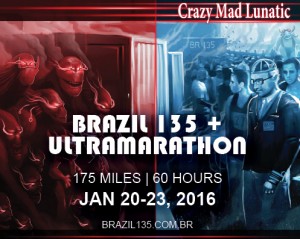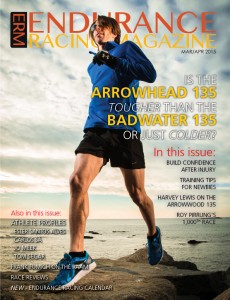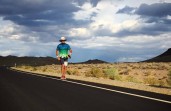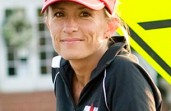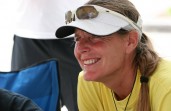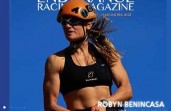Christine Couldrey: Quintuple Triathlon Finisher
 Having last been in the U.S. to compete in the Lake Anna Triple Triathlon, Christine decided a 9-year lag was enoughand back to the U.S. she came, to do the Quintuple Triathlon – and prove to herself that she could do it.
Having last been in the U.S. to compete in the Lake Anna Triple Triathlon, Christine decided a 9-year lag was enoughand back to the U.S. she came, to do the Quintuple Triathlon – and prove to herself that she could do it.
By Alix Shutello
Christine Couldrey is addicted to distance. In October 2013, “Kiwi” (as she’s known to her friends) committed to competing in the Quintuple Anvil Triathlon – the equivalent of five Ironman distance races.
The Quintuple Anvil Triathlon, which took place from October 8-13, 2013, at the bucolic Lake Anna State Park, Virginia, USA, draws endurance triathletes from all over the world. Last fall, Couldrey traveled from Australia to compete in the longest race of her career.
“I went so far as to committing to sharing a cabin in Lake Anna State Park to use as a base during the race. The conscious part of my brain was not convinced, but rationalized that logistically it would be easy, I knew the course, I could borrow all the little useful things that one needs from friends in the DC area,” she said.
Couldrey, who lives in New Zealand, has a lot of friends in the endurance world in the United States; including her friend, Aaron, who lives in DC and has shared many any ultra experiences with her. She believed he could be convinced to come and crew for her. She also has a longtime history and friendship with race director Steve Kirby – and when she heard there was a quintuple, she called to confirm that he was offering a race that longand then got to training.
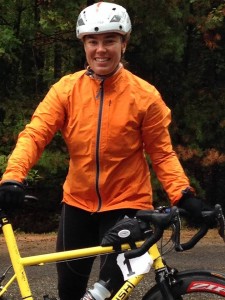 “In an ideal world, if one were going to do a quintuple Ironman, one would start training for it a year in advance – not spend weekends in the summer beekeeping, be involved in buying and selling properties, have minor surgery, be training for a major race during the dark, wet, windy months of winter in the Waikato. Sad to say, I didn’t manage to avoid any of those situations,” she mused.
“In an ideal world, if one were going to do a quintuple Ironman, one would start training for it a year in advance – not spend weekends in the summer beekeeping, be involved in buying and selling properties, have minor surgery, be training for a major race during the dark, wet, windy months of winter in the Waikato. Sad to say, I didn’t manage to avoid any of those situations,” she mused.
But Couldrey is no stranger to competing in multiday endurance races, having been involved in the endurance scene for close to 20 years. To prepare for the quintuple, she trained through the winter in sun, rain, wind and hail, often on her bike with her training buddy Annette. She also (for the first time) hired a running coach, to try to make her running more efficient.
“The coaching made a world of difference. I did my best to be a good student, work hard on my form, and it paid off,” she said. “While so many of my runs were in terrible weather, I was now able to run with less trauma to my knees and legs – and while I was very slow, I comforted myself with the knowledge that I had so much more running experience behind me than I did when I attempted the double and triple Ironman races at Lake Anna in prior years.”
She remembers how terrible the suffering was when she ran two and then three marathons during the double and triple triathlons, and wondered if she would be able to suffer through five. A mantra that her running coach, Mark Sutherland, had taught her was, “I will remain calm and positive at all times.” Couldrey had found this very useful during the Northburn 100-miler she ran a couple of years before. “Each time I struggled on a long run, I would remind myself of this, and carry on,” she said.
Kiwi started training a mere three months before the Anvil Quintuple, while camping on Whitehaven beach in Australia, which, she argues, is “one of the top 10 most beautiful beaches in the world.” She trained by swimming the 7-kilometer length of the beach, with the company of fish, stingrays and even the occasional little reef shark.
“I figured the swim was only 19 kilometers, and I knew I could do 12km from the triple, and it was going to be, by far, the shortest legso it deserved the smallest amount of training – right?” she said. But as race time approached, Couldrey wondered whether she had done enough. “How do you know how much is enough for a race of this length? I wouldn’t be able to answer that question until the race was over.”
Couldrey had spent many of the training hours calculating speed and formulating plans A, B and C for how the race would unfold. Aaron, her friend in DC, had also taken a very mathematical approach for her – basing his estimate on time needed for each discipline on times in previous races, working out what sort of scaling factor would be needed and then calculating the estimated total time required, presenting it to her in graphical form. It looked as though the 120 hours allowed by Steve Kirby would be enough, but there would likely not be much spare time (most quintuple races allow 144 hours).
“My main goal was to finish in under 120 hours; anything better than that would be a bonus,” she said.
That meant that after she started the quintuple at 7am Tuesday morning, October 8, 2013, she would finish by 7am Sunday morning, October 13, in her “best-case scenario” – or even by midnight or 1am on Sunday morning, so that she and her team could all go to sleep for the night and be done with it.
With the time for serious training over, Couldrey flew to the USA two weeks before the race, to give herself time to get organized before the competition began.
In a race like this, sometimes slow and steady wins the race, because the thought that you have 4.5 days left to compete – let alone 4.5 hours in one of your swim, bike, or running phases – can be hell on the mind. Couldrey went on to complete the swim phase in 6 hours and 40 minutes. Then it was on to the bike phase, 900 kilometers done 112.5 times over an 8km loop. Couldrey reminisced how difficult that up-and-back loop was 9 years ago when she competed in the triple, and how much easier it is training at home around Lake Taupo.
“As the hours go on and on, the real competition starts for all the athletes as you switch back and forth between competing against others and competing against yourself. There is a constant need to keep mentally focused as the days and nights blend together and you begin to rely more and more on your crew to feed you, get you to sleep, feed you, get you back on to the bike or back on your feet,” Couldrey related. “In the plan, I was going to sleep for 3 hours, between about 1:30 and 4:40am. I don’t think I quite made it to 1:30 before deciding I was too tired to carry on (again, worried about crashing my bike), but it was pretty close. A shower for the first time in 44 hours, some pasta and into bed. Three hours of glorious sleep. For the first time in the race, I slept solidly and deeply. Three hours later, the sleepiness of the previous day was forgotten, and after some porridge I was out there again to finish up the bike loop.”
After the bike phase was finished, it was Friday; and now Couldrey had two more days of competition to get her over the finish line. Now came 65 running laps – or 5 marathons – she had to endure. The first two marathons were relatively easy, but into marathon three, things seemed to slow down.
“With the coming of darkness, came some tiredness…and with tiredness comes a lack of patience, and with that, the pain becomes suffering,” Kiwi said. “While it wasn’t too bad until the last lap of the third marathon, lap 39/65 was perhaps the worst lap of the entire run. I struggled my way up to the turnaround, and there I met one of the volunteers, whose name I forget, but who was always so encouraging; and every time he saw me, he made a comment about how I was always smiling – often leaning out the window of his vehicle and saying “There’s that smile!” as he drove past. I said to him, ‘It’s taken 3 ½ days of racing, but my smile has gone!’ – and he wouldn’t accept that.”
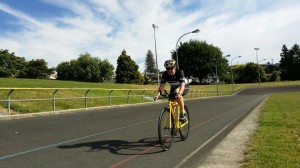 It gets maddening to see competitors finish their respective races, and Kiwi became frustrated at seeing her friends finishing their races – and as she entered marathon 5 she had to keep in mind than many were finishing their triple and quadruple triathlons; she was finishing her fifth.
It gets maddening to see competitors finish their respective races, and Kiwi became frustrated at seeing her friends finishing their races – and as she entered marathon 5 she had to keep in mind than many were finishing their triple and quadruple triathlons; she was finishing her fifth.
But as she neared the end of her race, “something amazing happened.” With 4 laps (10km) to go, Kiwi had the beacon of hope in her hand, as it had gotten dark and her brain completely overrode anything her body was saying. After walking for miles and miles, she wanted to want to run, as opposed to making herself run.
“I didn’t want to walk anymore, I was just going to run….so run I did. I was nearly there. But I still couldn’t let myself think about finishing…I needed to preserve the little bit of patience I had…but all of a sudden, it wasn’t suffering anymore; I had a job to do and I was doing it,” She said.
Even on the last lap, Kiwi couldn’t let herself think of the finish until she had only half a kilometer to go. She said good-bye to the athletes still on the course and finally picked up the flag, and walked the last 100 meters with her friends, listening to her national anthem.
“I was so very incredibly proud of what I had done,” she said.
Right before the race, Couldrey posted a question on Facebook: “How do you race a quintuple Ironman?” Now she knew the answer: One step at a time, with unwavering patience, making sure your brain is happy, separating physical pain from emotions, and trusting your friends.
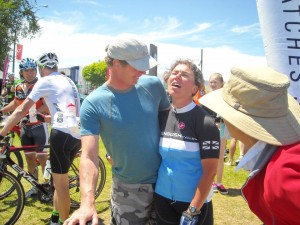 “The quintuple Ironman is by far the hardest thing I have done in my life; but I am so happy that I did it, and I finished hours ahead of my ‘best-case scenario’what more could I want?”
“The quintuple Ironman is by far the hardest thing I have done in my life; but I am so happy that I did it, and I finished hours ahead of my ‘best-case scenario’what more could I want?”
To learn more about the Double and Triple Anvil Irons, visit: USAUltraTri.com.


